1) Define a data frame that contains the line data and then use geom_vline with it. Note that BOD is a data frame that comes with R.
line.data <- data.frame(xintercept = c(2, 4), Lines = c("lower", "upper"),
color = c("red", "blue"), stringsAsFactors = FALSE)
ggplot(BOD, aes( Time, demand ) ) +
geom_point() +
geom_vline(aes(xintercept = xintercept, color = Lines), line.data, size = 1) +
scale_colour_manual(values = line.data$color)

2) Alternately put the labels right on the plot itself to avoid an extra legend. Using the line.data frame above. This also has the advantage of avoiding possible multiple legends with the same aesthetic.
ggplot(BOD, aes( Time, demand ) ) +
geom_point() +
annotate("text", line.data$xintercept, max(BOD$demand), hjust = -.25,
label = line.data$Lines) +
geom_vline(aes(xintercept = xintercept), line.data, size = 1)

3) If the real problem is that you want two color legends then there are two packages that can help.
3a) ggnewscale Any color geom that appears after invoking new_scale_color will get its own scale.
library(ggnewscale)
BOD$g <- gl(2, 3, labels = c("group1", "group2"))
line.data <- data.frame(xintercept = c(2, 4), Lines = c("lower", "upper"),
color = c("red", "blue"), stringsAsFactors = FALSE)
ggplot(BOD, aes( Time, demand ) ) +
geom_point(aes(colour = g)) +
scale_colour_manual(values = c("red", "orange")) +
new_scale_color() +
geom_vline(aes(xintercept = xintercept, colour = line.data$color), line.data,
size = 1) +
scale_colour_manual(values = line.data$color)
3b) relayer The experimental relayer package (only on github) allows one to define two color aethetics, color and color2, say, and then have separate scales for each one.
library(dplyr)
library(relayer)
BOD$g <- gl(2, 3, labels = c("group1", "group2"))
ggplot(BOD, aes( Time, demand ) ) +
geom_point(aes(colour = g)) +
geom_vline(aes(xintercept = xintercept, colour2 = line.data$color), line.data,
size = 1) %>% rename_geom_aes(new_aes = c("colour" = "colour2")) +
scale_colour_manual(aesthetics = "colour", values = c("red", "orange")) +
scale_colour_manual(aesthetics = "colour2", values = line.data$color)






